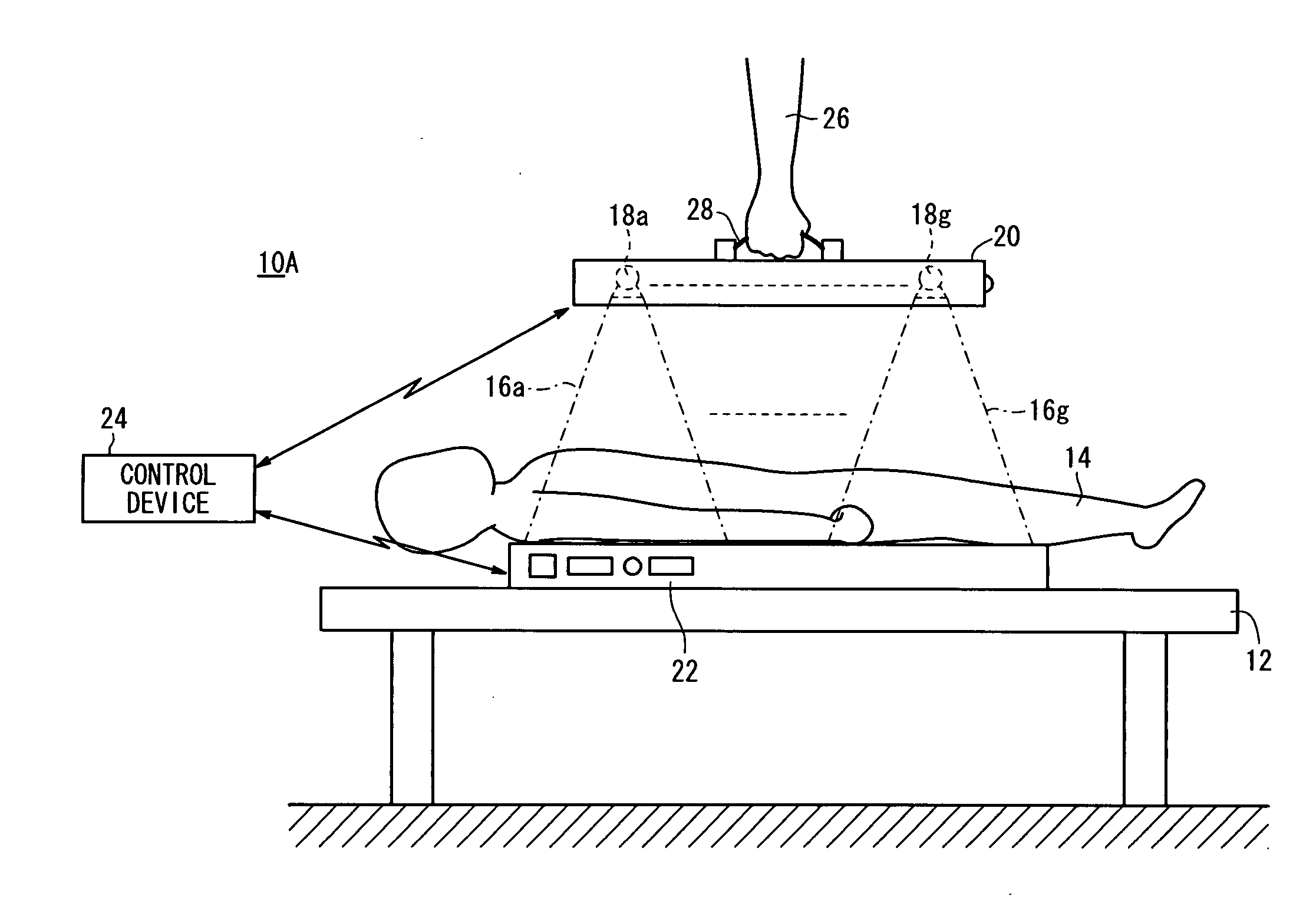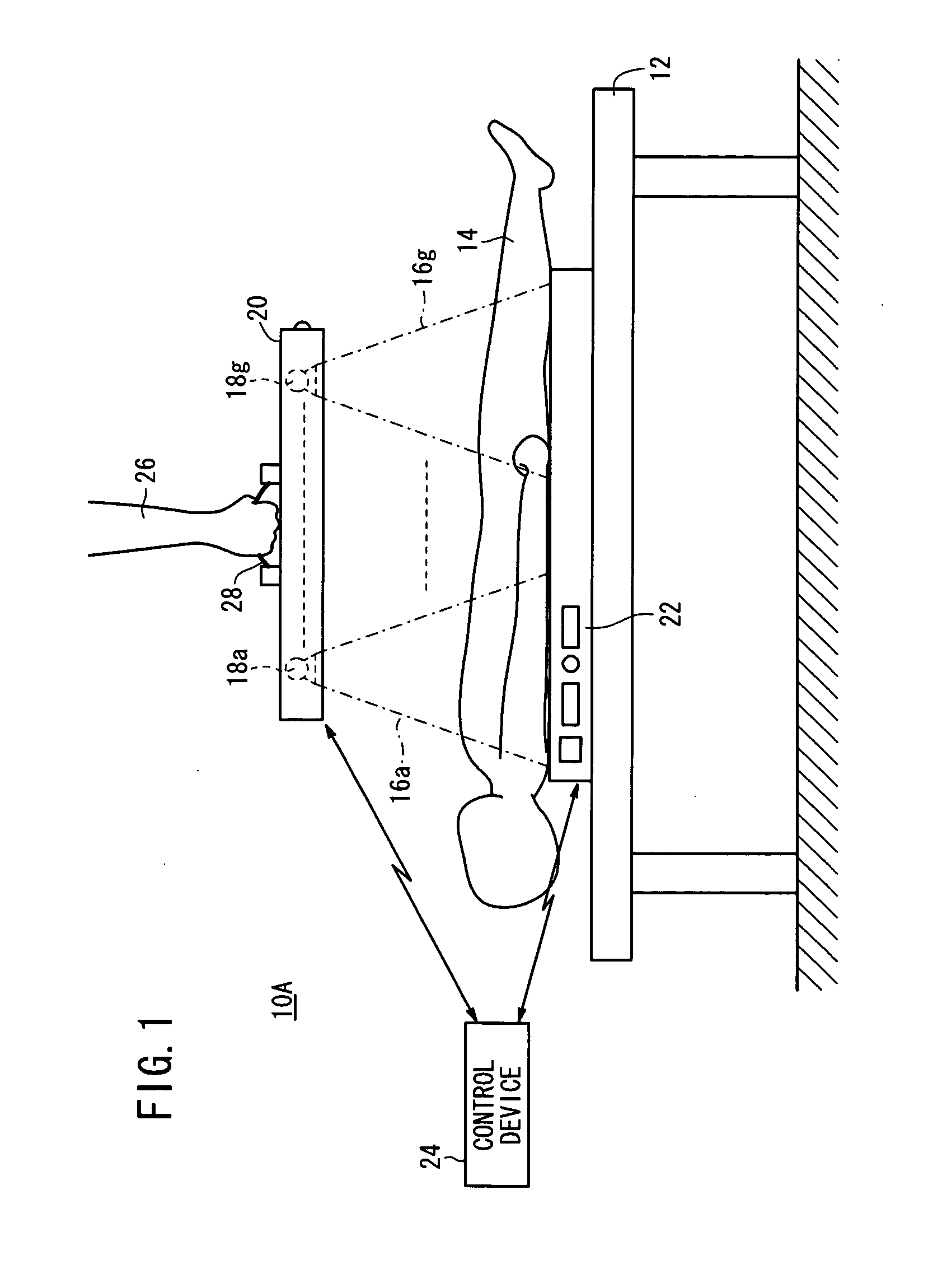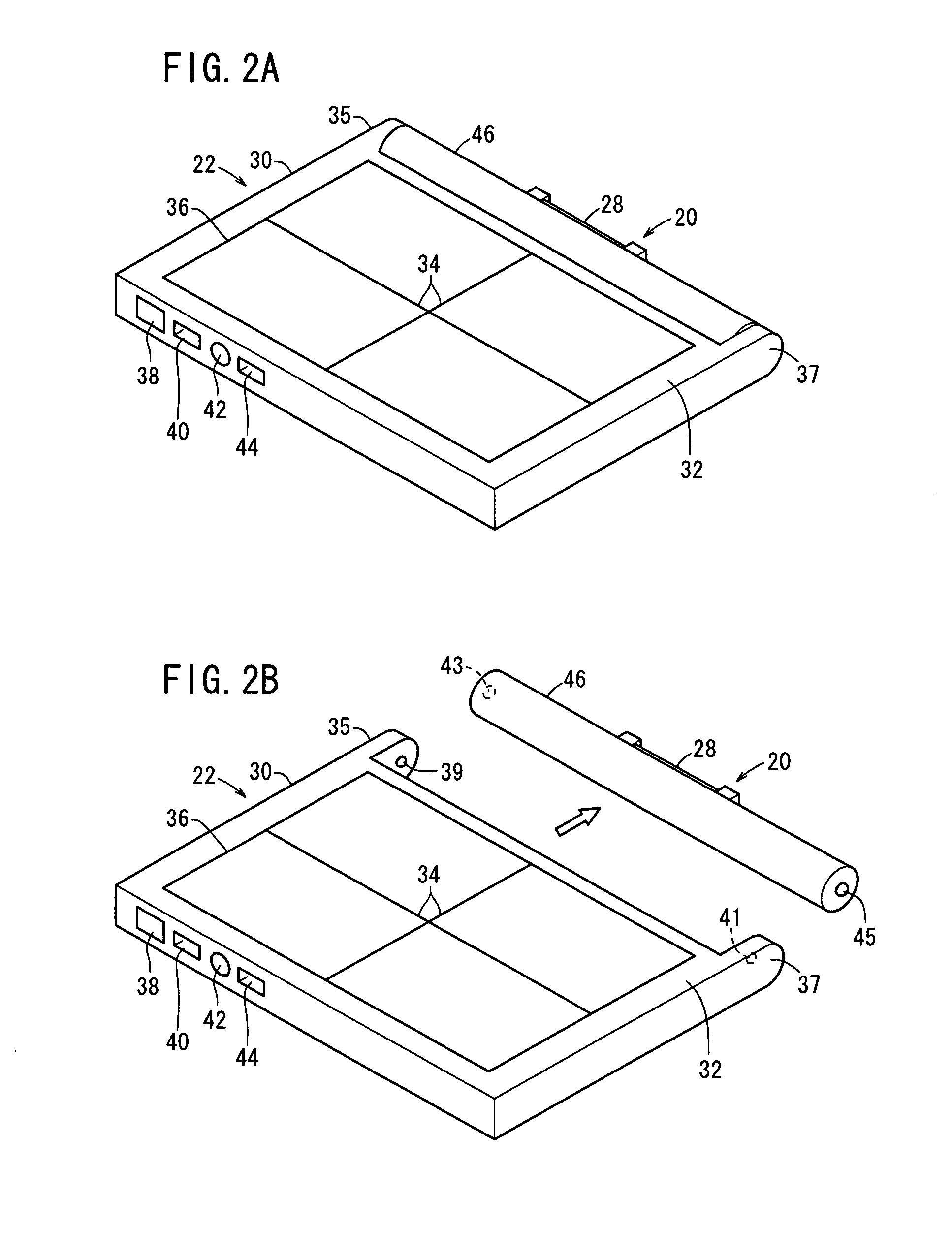Radiographic image capturing system and radiographic image capturing method
a radiographic image and imaging system technology, applied in the direction of material analysis using wave/particle radiation, instruments, applications, etc., can solve the problems of field-emission radiation sources that cannot capture radiation images, small and lightweight, and difficulty in preparing an appropriate external power supply, etc., to achieve the effect of easy expansion of the radiation radiation rang
- Summary
- Abstract
- Description
- Claims
- Application Information
AI Technical Summary
Benefits of technology
Problems solved by technology
Method used
Image
Examples
first embodiment
[Modifications of First Embodiment]
[0211]Modifications (first through sixth modifications) of the first embodiment will be described below with reference to FIGS. 12A through 18B.
[0212]Parts of such modifications, which are identical to those shown in FIGS. 1 through 11, are denoted by identical reference characters, and such features will not be described in detail below.
first modification
[First Modification]
[0213]In the first modification, as shown in FIGS. 12A and 12B, each of three groups 54, 56, 58 contains one radiation source 18a through 18c. In this case, the geometric center position in the three radiation sources 18a through 18c is the position of the central radiation source 18b. The central group 56 includes the geometric center position, whereas the other groups 54, 58 are positioned at both sides of the geometric center position.
[0214]According to the first modification, in an image capturing process with respect to a chest region as shown in FIG. 12A, weighting of the doses is carried out such that the doses of radiation 16a, 16c emitted from the radiation sources 18a, 18c included in the groups 54, 58 are of a maximum dose level, whereas the dose of radiation 16b emitted from the radiation source 18b included in the group 56 is of a lower dose level. On the other hand, in an image capturing process with respect to a hand as shown in FIG. 12B, weighting...
second modification
[Second Modification]
[0216]In the second modification, as shown in FIGS. 13A and 13B, each of four groups 156, 158, 160, 162 contains one radiation source 18a through 18d. In this case, the geometric center position in the four radiation sources 18a through 18d is an intermediate position between the radiation source 18b and the radiation source 18c. The groups 158, 160 including the radiation sources 18b, 18c do not include the geometric center position but are positioned near the geometric center position, whereas the other groups 156, 162 are positioned at both sides of the geometric center position.
[0217]According to the second modification, in an image capturing process with respect to a chest region as shown in FIG. 13A, weighting of the doses is carried out such that the doses of radiation 16a, 16d emitted from the radiation sources 18a, 18d included in the groups 156, 162 are of a maximum dose level whereas the doses of radiation 16b, 16c emitted from the radiation sources 1...
PUM
 Login to View More
Login to View More Abstract
Description
Claims
Application Information
 Login to View More
Login to View More - R&D
- Intellectual Property
- Life Sciences
- Materials
- Tech Scout
- Unparalleled Data Quality
- Higher Quality Content
- 60% Fewer Hallucinations
Browse by: Latest US Patents, China's latest patents, Technical Efficacy Thesaurus, Application Domain, Technology Topic, Popular Technical Reports.
© 2025 PatSnap. All rights reserved.Legal|Privacy policy|Modern Slavery Act Transparency Statement|Sitemap|About US| Contact US: help@patsnap.com



